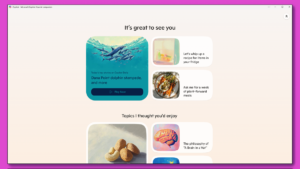Transforming Government Service Delivery Through Advancements in AI and Cloud Technology

The Evolution of Government Service Delivery Through AI and Cloud Technology
The way governments provide services to their citizens is undergoing a significant transformation. This change is largely driven by advancements in artificial intelligence (AI) and cloud technology. As these technologies continue to evolve, they enable governments to deliver services more efficiently and effectively.
The Role of AI in Government Services
Artificial intelligence is reshaping the approach governments take in various services, making them faster and more user-friendly. Here are a few key areas where AI is making a notable impact:
Customer Service Enhancement: AI-powered chatbots and virtual assistants can handle common inquiries, providing instant responses to citizens. This reduces wait times and allows human staff to focus on more complex issues.
Data Analysis and Decision-Making: AI can analyze vast amounts of data quickly, allowing government agencies to make better-informed decisions. This can improve everything from resource allocation to policy development.
- Predictive Services: Governments can utilize AI to predict future needs, such as public health trends or traffic patterns. By anticipating these needs, they can take proactive measures to address potential issues.
Cloud Technology: A Catalyst for Change
Cloud computing allows government agencies to operate more flexibly and efficiently. Here are some advantages of using cloud technology in public service delivery:
Cost Efficiency: Cloud services can reduce the costs associated with maintaining physical servers and infrastructure. Governments can often access high-quality services at a fraction of the price.
Scalability: Cloud solutions allow for easy scalability, which means that government agencies can adjust resources based on fluctuating needs. This is particularly useful during peak periods, such as tax season or emergency responses.
- Collaboration and Information Sharing: Cloud technology facilitates better collaboration between different government agencies and departments. This seamless sharing of information helps to minimize redundancies and enhance overall service delivery.
The Intersection of AI and Cloud Technologies
The combination of AI and cloud technology is particularly beneficial in transforming government services. Their integration enables:
Real-Time Insights: Governments can leverage AI algorithms to analyze data stored in the cloud, gaining real-time insights into ongoing operations and citizen needs. This ensures that services are well-timed and relevant.
Enhanced Security: Cloud providers often have advanced security measures in place to protect sensitive government data. Coupled with AI, they can detect and neutralize potential security threats more effectively.
- Personalization of Services: Using AI analytics tools, governments can tailor services to meet the specific needs of individual citizens. For instance, personalized outreach can be used for welfare programs or notifications about new services.
Challenges to Overcome
While the integration of AI and cloud technology in government service delivery presents significant opportunities, it also poses some challenges:
Data Privacy Concerns: With the increasing amount of data handled by governments, there are legitimate concerns regarding citizen privacy. Ensuring data is securely managed and transparent is crucial.
Resistance to Change: Implementing new technologies may face resistance from staff accustomed to traditional practices. It’s important to provide adequate training and demonstrate the benefits of these changes.
- Infrastructure Needs: Not all governmental agencies have the necessary infrastructure to support advanced AI and cloud technologies. Investment in modernizing systems is often required for a successful transition.
The Future of Government Services
As the technological landscape continues to evolve, governments are positioned to leverage AI and cloud capabilities to their full potential. By embracing these advancements, public services can become more responsive, transparent, and citizen-centered. With ongoing developments, the possibilities for improvement are endless, making it an exciting time for government service delivery.





